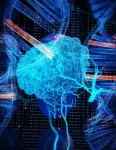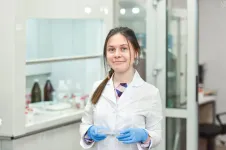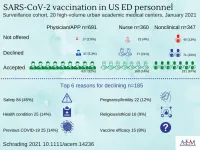(Press-News.org) A new algorithm can predict which genes cause cancer, even if their DNA sequence is not changed. A team of researchers in Berlin combined a wide variety of data, analyzed it with "Artificial Intelligence" and identified numerous cancer genes. This opens up new perspectives for targeted cancer therapy in personalized medicine and for the development of biomarkers.
In cancer, cells get out of control. They proliferate and push their way into tissues, destroying organs and thereby impairing essential vital functions. This unrestricted growth is usually induced by an accumulation of DNA changes in cancer genes - i.e. mutations in these genes that govern the development of the cell. But some cancers have only very few mutated genes, which means that other causes lead to the disease in these cases.
A team of researchers at the Max Planck Institute for Molecular Genetics (MPIMG) in Berlin and at the Institute of Computational Biology of Helmholtz Zentrum München developed a new algorithm using machine learning technology to identify 165 previously unknown cancer genes. The sequences of these genes are not necessarily altered - apparently, already a dysregulation of these genes can lead to cancer. All of the newly identified genes interact closely with well-known cancer genes and have been shown to be essential for the survival of tumor cells in cell culture experiments.
Additional targets for personalized medicine
The algorithm, dubbed "EMOGI" for Explainable Multi-Omics Graph Integration, can also explain the relationships in the cell's machinery that make a gene a cancer gene. As the team of researchers headed by Annalisa Marsico describe in the journal Nature Machine Intelligence, the software integrates tens of thousands of data sets generated from patient samples. These contain information about DNA methylations, the activity of individual genes and the interactions of proteins within cellular pathways in addition to sequence data with mutations. In these data, a deep-learning algorithm detects the patterns and molecular principles that lead to the development of cancer.
"Ideally, we obtain a complete picture of all cancer genes at some point, which can have a different impact on cancer progression for different patients", says Marsico, head of a research group at the MPIMG until recently and now at Helmholtz Zentrum München. „This is the foundation for personalized cancer therapy."
Unlike with conventional cancer treatments such as chemotherapy, personalized therapy approaches tailor medication precisely to the type of tumor. "The goal is to select the best therapy for each patient - that is, the most effective treatment with the fewest side effects. Additionally, we would be able to identify cancers already at early stages, based on their molecular characteristics."
"Only if we know the causes of the disease will we be able to counteract or correct them effectively," the researcher says. "That's why it's so important to identify as many mechanisms as possible that can induce cancers."
Better results by combination
"Until now, most research has focused on pathogenic changes in the genetic sequence, i.e., in the blueprint of the cell," says Roman Schulte-Sasse, a doctoral student on Marsico's team and first author of the publication. "At the same time, it has become apparent in recent years that epigenetic perturbations or dysregulated gene activity can lead to cancer as well."
This is why the researchers merged sequence data that reflect faults in the blueprint with information that represents events inside the cell. Initially, the scientists confirmed that mutations, or the multiplication of segments of the genome, are indeed the main drivers of cancer. Then, in a second step, they pinpointed gene candidates that are in a less direct context to the actual cancer-driving gene.
"For instance, we found genes whose sequence is mostly unchanged in cancer, and yet are indispensable to the tumor because they regulate energy supply," Schulte-Sasse says. These genes are out of control by other means, e.g. because of chemical changes on the DNA like methylations. These modifications leave the sequence information intact but govern a gene's activity. "Such genes are promising drug targets, but because they operate in the background, we can only find them by using complex algorithms."
In search of hints for further studies
The researcher's new program adds a considerable number of new entries to the list of suspected cancer genes, which has grown to between 700 and 1,000 in recent years. It was only through a combination of bioinformatics analysis and the newest Artificial Intelligence (AI) methods that the researchers were able to track down the hidden genes.
"The interactions of proteins and genes can be mapped as a mathematical network, known as a graph," Schulte-Sasse says. "You can think of it like trying to guess a railroad network; each station corresponds to a protein or gene, and each interaction among them is the train connection."
With the help of deep learning - the very algorithms that have helped artificial intelligence make a breakthrough in recent years - the researchers were able to discover even those train connections that had previously gone unnoticed. Schulte-Sasse had the computer analyze tens of thousands of different network maps from 16 different cancer types, each containing between 12,000 and 19,000 data points.
Suitable for other types of diseases as well
Hidden in the data are many more interesting details. "We see patterns that are dependent on the particular cancer and tissue" Marsico says. "We see this as evidence that tumors are triggered by different molecular mechanisms in different organs."
The EMOGI program is not limited to cancer, the researchers emphasize. In theory, it can be used to integrate diverse sets of biological data and find patterns there, explains Marsico. "It could be useful to apply our algorithm for similarly complex diseases for which multifaceted data are collected and where genes play an important role. An example might be complex metabolic diseases such as diabetes."
INFORMATION:
Original publication
Roman Schulte-Sasse, Stefan Budach, Denes Hnisz, and Annalisa Marsico
Integration of Multi-Omics Data with Graph Convolutional Networks to Identify New Cancer Genes and their Associated Molecular Mechanisms.
Nature Machine Intelligence
In the earliest stage of life, animals undergo some of their most spectacular physical transformations. Once merely blobs of dividing cells, they begin to rearrange themselves into their more characteristic forms, be they fish, birds or humans. Understanding how cells act together to build tissues has been a fundamental problem in physics and biology.
Now, UC Santa Barbara professor Otger Campàs, who also holds the Mellichamp Chair in Systems Biology and Bioengineering, and Sangwoo Kim, a postdoctoral fellow in professor Campàs lab, have approached this question, with surprising findings.
"When you have many cells physically interacting with each other, how does the system behave collectively? What is the physical state of the ensemble?" said ...
Evidence is growing that health care delivered by teams is superior to services delivered by a single practitioner. Published in the Journal of the American Board of Family Medicine -- University of Minnesota, University of North Carolina, American Board of Family Medicine and the American Academy of Family Physicians researchers compared key elements from the practice of a pharmacist providing comprehensive medication management to the foundational components defined for primary care.
Based on a common health care team framework -- the Four C's of Primary Care (first contact, continuity, comprehensiveness, and coordination) -- this team ...
UNIVERSITY PARK, Pa. -- When the COVID-19 pandemic hit in early 2020, many families found themselves suddenly isolated together at home. A year later, new research has linked this period with a variety of large, detrimental effects on individuals' and families' well-being and functioning.
The study -- led by Penn State researchers -- found that in the first months of the pandemic, parents reported that their children were experiencing much higher levels of "internalizing" problems like depression and anxiety, and "externalizing" problems such as disruptive and aggressive behavior, than ...
Young scientists from NUST MISIS have presented multilayer antibacterial coatings with a prolonged effect and a universal spectrum of action. The coating is based on modified titanium oxide and several antiseptic components. The coatings can be used in modern implantology as a protective layer for the prevention of concomitant complications - inflammation or implant rejection. The results of the work have been published in the international scientific journal Applied Surface Science.
Antibacterial coatings are currently being actively researched, as the search for alternatives to traditional antibiotics is growing. They can be applied to implants, thereby preventing inflammation caused by nosocomial infections.
Nevertheless, the creation of antibacterial, but at the same time biocompatible ...
DES PLAINES, IL - At the beginning of prioritized health care personnel (HPC) immunization, there was a high rate of COVID-19 vaccine acceptance and receipt, with physicians and advance practice providers having the highest overall proportion. These are the findings of a surveillance project on COVID-19 vaccination rates among emergency department staff at United States academic medical centers, which will be published in the April issue of the Academic Emergency Medicine (AEM) journal, a peer-reviewed journal of the Society for Academic Emergency Medicine (SAEM).
The project report, published in a ...
BOSTON - Medical cannabis products are not always what they seem, according to a new study led by researchers at the Massachusetts General Hospital (MGH).
In fact, the contents of these products can vary considerably from distributors' claims, according to the study, published in JAMA Network Open. This is particularly important when THC, the metabolite responsible for the "high" cannabis provides, is present in medical cannabis products labeled to be CBD only.
As more states legalize cannabis sales, demand has increased. However, there is little consistency in product regulation or labeling, unlike the strict regulation of medicines purchased through a pharmacy. As a result, labeling is often not accurately informing patients of the content of the ...
Whether eating out or buying food from the grocery store, Americans of all ages are, for the most part, eating poorly everywhere--except at school. The information comes from a new dietary trends study, which also reveals persistent or worsening disparities in meal quality from restaurants, grocery stores, and other sources--but not school--by race, ethnicity, and income.
Published today in JAMA Network Open and led by researchers at the Gerald J. and Dorothy R. Friedman School of Nutrition Science and Policy at Tufts University, the study analyzed all meals (including snacks and beverages) consumed by Americans over 16 years.
By 2018, ...
What The Study Did: The results of incorporating HIV screening into COVID-19 testing at an emergency department in Chicago are reported in this study.
Authors: David Pitrak, M.D., of the University of Chicago Medicine, is the corresponding author.
To access the embargoed study: Visit our For The Media website at this link https://media.jamanetwork.com/
(doi:10.1001/jamainternmed.2021.0839)
Editor's Note: The article includes conflicts of interest and funding/support disclosures. Please see the article for additional information, including other authors, author contributions and affiliations, conflict of interest and financial disclosures, and funding and support.
INFORMATION:
Media advisory: The full study is linked to this news release.
Embed this link ...
What The Study Did: Changes in quality of diet from different sources of food among U.S. children and adults from 2003 to 2018 were examined in this survey study.
Authors: Junxiu Liu, Ph.D., of the Icahn School of Medicine at Mount Sinai in New York, is the corresponding author.
To access the embargoed study: Visit our For The Media website at this link https://media.jamanetwork.com/
(doi:10.1001/jamanetworkopen.2021.5262)
Editor's Note: The article includes conflicts of interest and funding/support disclosures. Please see the article for additional information, including other authors, author contributions ...
What The Study Did: Researchers compared the risk of death between infants with and without prenatal opioid exposure and also the difference in risk if diagnosed with neonatal opioid withdrawal syndrome.
Authors: JoAnna K. Leyenaar, M.D., Ph.D., M.P.H., of Children's Hospital at Dartmouth-Hitchcock Medical Center in Lebanon, New Hampshire, is the corresponding author.
To access the embargoed study: Visit our For The Media website at this link https://media.jamanetwork.com/
(doi:10.1001/jamapediatrics.2021.6364)
Editor's Note: The article includes conflict of interest and funding/support disclosures. Please see the article for additional information, including ...



